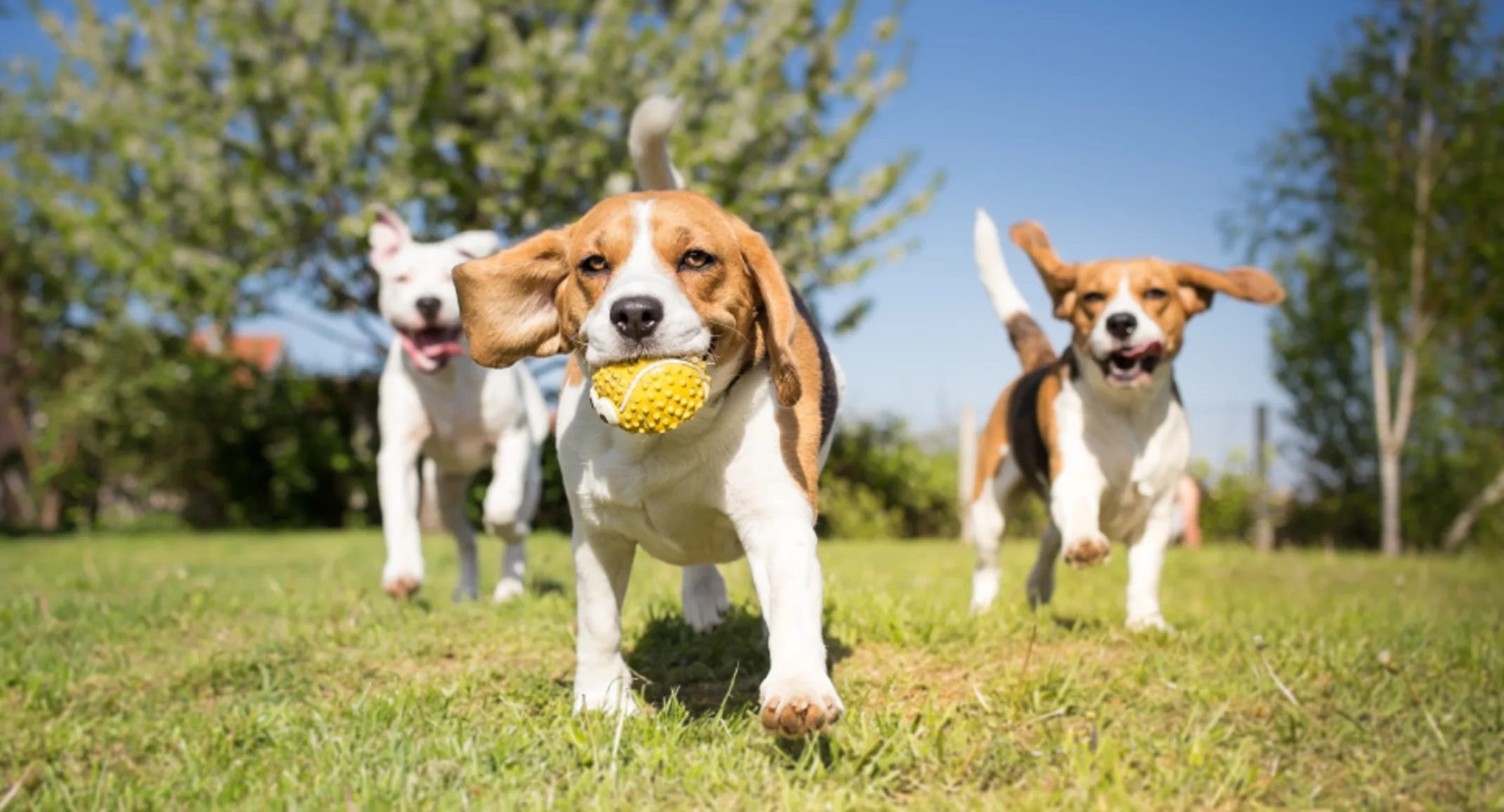The Importance of Puppy Socialization
Pet Behavior

If you have recently adopted a “pandemic puppy,” you are not alone. Many families have taken this opportunity to bring a new furry family member into the fold. Whether you have adopted a puppy because you have more time on your hands, are looking for companionship, or need something positive in your life, you want to provide your puppy with everything they need for a healthy, happy start in life. Socialization is a crucial part of your puppy’s healthy development and is essential to ensure a calm, confident, well-adjusted companion. Without socialization, your puppy may develop irrational fears, and be unable to handle new situations as an adult. Socializing your puppy properly involves exposing them in a positive manner to new experiences, including a variety of sounds, smells, textures, places, and people, to help them understand that new things are not scary. But, accomplishing this during a pandemic may be challenging, because social distancing, masks, and health concerns can make introducing your puppy to new people and places more difficult. Our Animal Health Care of Marlboro team shares eight tips to help you acclimate your pandemic puppy to the wide world.
1. Introduce your puppy to unfamiliar items in your home
Many noisy household items can scare new puppies. To prevent your future adult dog from hiding behind the couch every time you pull out the vacuum or hair dryer, teach your puppy that they do not need to be afraid of these common items. Start by rewarding your puppy with a treat for sniffing the turned-off vacuum. Next, have a family member play with your puppy while you turn on the vacuum in another room, and reward them for calm behavior. Gradually move the vacuum closer to your puppy, as long as they remain relaxed. If your puppy becomes anxious, back up and go more slowly.
2. Have each family member help with puppy care
You may desperately want your new puppy to imprint on you, but latching onto only one person is not healthy for your pup. Teach them to love every family member by splitting up puppy care duties, such as feeding, walking, and playing. Dogs naturally respect the person who feeds them, so rotate feeding duty, and ask your puppy to sit calmly while a family member fills their bowl at mealtime.
3. Acclimate your puppy to common grooming tasks
Dogs often turn into a cowering mess when their toenails are trimmed or their ears are cleaned. Help your puppy remain calm at the groomer or veterinary hospital by teaching them early that being handled is nothing to fear. Start by touching your puppy’s feet, ears, or mouth, and rewarding them with praise and a treat. Slowly work up to opening your pup’s mouth, handling individual toes, and wiping their ear canals with a cotton ball.
4. Walk your puppy on different ground surfaces
Instead of walking every day on the same path, venture onto different substrates, such as grass, dirt, pavement, mulch, and dried leaves. If your puppy hesitates, reward them for taking one step onto a new surface, and then return to the path. The next day, encourage them to take a few more steps. Before you know it, your pooch will unabashedly bound onto new surfaces.
5. Expose your puppy to bicycles and other wheeled objects
Many dogs bark incessantly at passing bikes, skateboards, and scooters, and although they sound aggressive, they are likely reacting in fear. To help your puppy understand that the wheeled objects whizzing by will not harm them, reward them for viewing a bike or scooter from a distance. Gradually move closer, rewarding your puppy all the while. It may also help if one of your children rides by slowly, and gives your pup a treat.
6. Walk your puppy on a six-foot leash around new people
While you will use a short leash to teach your puppy to walk obediently by your side and correct problem behaviors, reserve a longer leash for special “meet-and greet” outings. Head to a popular location, such as a park, where you will likely encounter people who will find a puppy irresistible. Allow your puppy to greet strangers—the more diverse, the better, including various ages, skin colors, and manners of dress—as you kindly ask them to not force an interaction. Reward your puppy for confidently approaching new people, and use focus words, such as “Sit,” or “Stay,” if your puppy becomes overly excited.
7. Schedule outdoor puppy playdates with close friends or family
Arrange individual play sessions with close family members or friends who have calm, well-behaved dogs. Meet on neutral territory, such as a park, so neither dog has a leg up or feels the need to defend their territory. Introduce the dogs on leashes, and allow your puppy to approach the new dog at their own pace. Never force an interaction, and if your puppy seems uninterested or anxious, distract them with a game of fetch to calm their nerves.
8. Visit outdoor dining areas with your puppy
Once you feel comfortable that your puppy will sit calmly by your side, consider visiting a pet-friendly outdoor dining area. This is a good opportunity for your puppy to calmly take in a variety of people, noises, and smells in a non-threatening environment. Ensure you pack lots of treats, and reward your puppy for confident behavior. While you may need to be resourceful to socialize your puppy during a pandemic, you can do it. With restrictions relaxed and many activities and local businesses opening up, there are many opportunities to bring your new pup out and about on many adventures. You will appreciate your efforts down the road when you have a calm, confident dog who takes new experiences in stride. If you have recently adopted a new puppy, we would love to welcome them to the AHC family. Give us a call to schedule their first wellness appointment.
